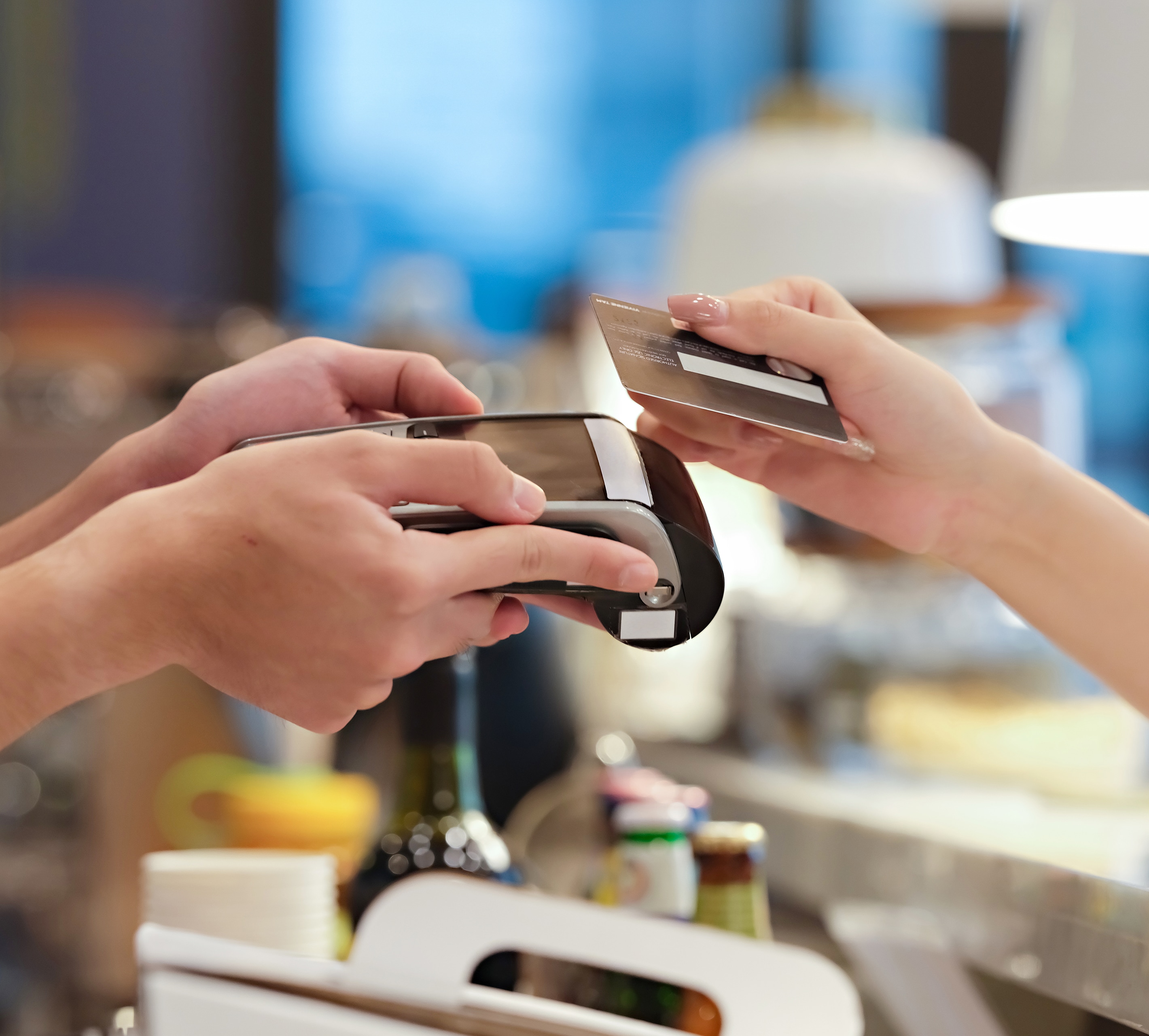
Introduction
PwC’s Retail and Consumer Insights provides the latest consumer behaviour news and trends in New Zealand and internationally. We analyse data from the PwC Retail and Consumer Dashboard (focusing on electronic spending by industry in New Zealand) to equip you with insights to inform your business decision making. Our commentary also covers our observations of key changes in the ANZ-Roy Morgan Consumer Confidence Index, Stats NZ, Auckland Heart of the City footfall data, and other local and global sources.
Key highlights from our November 2021 edition include:
Consumer confidence declined a further seven points from 105 in September to 98 points in October - well below the long-term (pre-COVID) historical average of 120 and the lowest level since May 2020.
According to the ANZ survey, annual household inflation expectations have gone ‘ballistic’, increasing from 5.1% to 6.2%.
Analysis of October 2021 electronic spending highlights the pent up demand that has accumulated, with the total value of electronic spend increasing on a seasonally adjusted basis by $645m (+9.5%) compared with September.
Comparisons of YTD spend with the equivalent (pre-COVID) levels of 2019 highlight the ‘winners’ and ‘laggards’ with spend in the Consumables and Hospitality categories +12.9% and -8.8%, respectively.
Q3 2021 (July - September) was the largest quarter since NZ Post started monitoring online sales three years ago, with $1.78bn in online sales. Online spend has increased from 10% to 14% of total retail sales over the past two years.
Buy Now Pay Later (BNPL) platforms continue to see strong consumer uptake, particularly for younger consumers, with BNPL spending this quarter up 38% compared to the same quarter last year and 125% up on the same quarter two years ago.

To explore further, select the buttons below.
Consumer confidence
During the month of October parts of Northland and the Waikato bounced between various iterations of Alert Level 3, Auckland endured a further month of lockdown restrictions, and the rest of the country remained at Alert Level 2. As a result, the October edition of the ANZ-Roy Morgan Consumer Confidence Index (released on 29 October) revealed a further seven point decline in consumer confidence to 98 points. This is well below the long-term (pre-COVID) historical average of 120 and the lowest level since May 2020. Perhaps of more concern to retailers, the proportion of respondents who believe it is a good time to buy a major household item was unchanged, i.e. a net 7% of respondents now think that it is a bad time to buy a major household item. While this remains the best retail indicator in the ANZ survey, the October result demonstrates that last month’s 20 point decline was not an isolated event.

"A further decline in consumer confidence is a real concern for the retail and hospitality industries. While Auckland may be looking forward to some easing of lockdown restrictions, experience from elsewhere in the country suggests that this may be short lived as inflation erodes consumer discretionary spend."
The failure of the household response to “whether it was a good time to buy a major household item” to recover from the plunge in September may in part be due to lockdown restrictions. However, it should be noted that there has been a sharp drop in this indicator in all parts of New Zealand in the last few months (except Wellington). As noted previously, other reasons for this decline include:
inflation concerns
mortgage rate increases
supply chain disruption
ongoing COVID related uncertainty.
From an age demographic perspective, the ANZ survey also noted that the decline was particularly significant for young adults (18-24 year olds), consistent with the first lockdown last year. Younger adults tend to have lower incomes and are potentially more exposed to price inflation. However, they are less exposed to increases in mortgage rates where the hit on 35-49 year olds has also been significant.


Meanwhile, annual household inflation expectations have gone ‘ballistic’ according to the ANZ survey, increasing from 5.1% to 6.2% at least in part influenced by recent media coverage and the the Stats NZ September quarter CPI release. House price inflation expectations also increased 0.6% to 6.7%, with Auckland being the only region to register a decline in inflation expectations.
Spend trends
Changes in consumer spending habits can be seen in the Stats NZ electronic card transactions series data that includes all debit, credit and charge card transactions with New Zealand-based merchants. Using the Retail and Consumer Dashboard developed by PwC New Zealand, we are able to compare YTD retail related electronic spend data by sector with the comparable periods in 2019 and 2020.
Analysis of October 2021 electronic spending (released by Stats NZ on 9 November 2021) highlights the pent up demand that has accumulated over the last few months (since lockdown on 17 August 2021), with the total value of electronic card spending, including the two non-retail categories (services and other non-retail) increasing on a seasonally adjusted basis by $645m (+9.5%) compared with September 2021. In terms of spend by category, seasonally adjusted changes in electronic spend for October 2021 (compared to September 2021) were:
durables, up $149m (+11.5%)
fuel, up $69m (+16.3%)
motor vehicles (excluding fuel), up $40m (+26.9%)
apparel, up $35m (+18.6%)
consumables, down $6m (-0.2%).

In terms of the YTD figures, total retail spend is up 5.0%, with the most significant movements recorded in Hospitality (+10.6%), Apparel (+9.7%) and Services2 (6.9%) categories.
YTD electronic spend by sector

Electronic spend - change in spending last 12 months

Perhaps more relevant given the ongoing disruption caused by the ongoing COVID restrictions across New Zealand is how retail spend compares to the equivalent (pre-COVID) levels of 2019. The chart below compares 2021 YTD spending in the core retail categories to the equivalent YTD spend in 2019. Based on this analysis, the ‘winners’ and ‘laggards’ are readily apparent. YTD (January to October 2021 vs. 2019) spend in the Consumables and Hospitality categories was +12.9% and -8.8%, respectively. What is perhaps surprising is that the decline in the Hospitality category is less than what ongoing media coverage (and border closures) might otherwise suggest. In addition to the impact of the August lockdown being readily apparent, it is interesting to note that the ‘out-performance’ of the Consumables category has continued to increase, while the Durables category has declined since August - broadly in line with the Hospitality and Apparel categories.
Finally, Stats NZ also provides a breakdown of year-on-year electronic spend at the sub-category level, with the most significant changes for the month of October (compared to October 2020) being:
supermarket and grocery stores, up $181m (+9.5%)
furniture, electrical, and hardware retailing, down $81m (-9.9%)
department stores, down $37m (-10.9%)
food and beverage services, down $212m (-21.7%)
accommodation services, down $63m (-37.9 %).

Auckland footfall insights
Our PwC Retail and Consumer Dashboard also tracks pedestrian footfall data on an hourly basis across the Auckland CBD3. While particularly focused on the Auckland region, the ongoing impact of the current Alert Level restrictions on retailers is highlighted in the recently released October data. For comparison purposes, it is also important to note that Auckland returned to Alert Level 1 on 7 October 2020 (and remained at that level until 14 February 2021).
While the impact of the current Alert Level restrictions is still significant, Aucklanders’ frustration (i.e. non-compliance) is evident in the fact that footfall in the Auckland CBD actually increased 49.2% from 711,783 in September 2021 to 1,062,055 in October 2021. In terms of year-on-year comparisons, pedestrian footfall in October 2021 was 74.4% below the level recorded in October 2020 (and 81.2% below October 2019). However, this is actually less than the decline reported in September 2021, i.e. down 78.5% compared to September 2020 (and 86.6% below September 2019).

From a YTD perspective, the position has deteriorated further with total Auckland CBD footfall in the year to October 2021 of 31.1m. This is 14.1% and 46.5% below the equivalent periods in 2020 and 2019 (pre-COVID), respectively. The Government’s ‘decision in principle’ on 1 November 2021 to move Auckland to Alert Level 3, Step 2 at 11:59pm on 9 November only extended the challenges faced by many Auckland retailers. Unfortunately, the outlook for Auckland’s hospitality industry and those services that require close personal contact, such as hairdressing, remains challenging.
“After nearly 11 weeks of lockdown, the time has come to move to Step 2 of the roadmap this week, and get shops and services open.”


NZ Post eCommerce Spotlight
NZ Post recently released its eCommerce spotlight - a quarterly report on New Zealand’s online shopping trends. This edition had a focus on Auckland, as the supercity has spent half the quarter in lockdown, highlighting the ongoing growth in online sales.
Spotlight on Auckland
Auckland’s extended lockdown led to a significant growth in online shopping numbers. This has resulted in industry wide fulfillment challenges. Online sales increased by 94% from the week before lockdown to the last week of September, with all indicators pointing to further growth in October. September sales peaked at levels higher than the pre-Christmas shopping rush in November last year. Aucklanders spent $702m online in Q3 2021, up $122m year-on-year. This is also 52% higher than the same quarter in 2019. The graph below shows the increase compared to previous years:

Drivers of this growth include:
The increased number of Aucklanders shopping online - 77,000 (15%) increase in the number of Aucklanders shopping online compared to Q3 2020.
Increased number of transactions - the number of transactions completed during the quarter increased by 1.4 million (29%) compared to Q3 2020.
These increases are contrasted with a decrease in average transaction value (down $6 per transaction compared to 2020). This increase in transaction frequency at a decreased basket size is likely to put further logistical pressure on online order fulfillment in the lead up to Christmas.
Key online shopping trends
Q3 2021 was the largest quarter since NZ Post started monitoring online sales three years ago with:
- $1.78bn in online sales.
- Online spending as a percentage of total retail sales has increased from 10% to 14% over the past two years, with 2021 YTD up 44% compared to the same period in 2019.
- Over 70% of online spend has been with domestic retailers.
Buy Now Pay Later (BNPL) platforms continue to see strong consumer uptake, particularly for younger consumers. BNPL spending this quarter is up 38% compared to the same quarter last year and 125% up on the same quarter two years ago.
There is a strong correlation between BNPL growth, the growth of the younger-age groups spending online, and the growth of sectors like Clothing & Footwear and Department & Variety (which are over-represented by the younger age groups). BNPL is allowing younger shoppers, who have not historically had access to credit, to buy items that they may have struggled to afford in one payment. However, BNPL options still face the threat of further regulation. The Ministry of Business, Innovation & Employment has recently released a Government consultation paper proposing options that attempt to regulate and address the financial hardship that BNPL platforms can cause consumers.

Recent news
New Zealand wine has been in high demand internationally, with the value of exports reaching $600m in Q3 2021 - up 9% on the same period last year. New Zealand Winegrowers chief executive Philip Gregan said “the demand proved that New Zealand wine's distinctive flavours, quality and sustainability credentials were resonating with global consumers”.
Queues formed outside Sylvia Park mall post the Government's announcement that Auckland would move to Level 3, Stage 2 at 11:59pm Tuesday 9 November. Queues of over 100 people were lined up outside by midday, despite the new rules not coming into effect for another 12 hours.
Burberry has opened its first store in New Zealand at Westfield Newmarket. The store will house Burberry's latest collections for men and women including styles from the Autumn/Winter 2021 collection such as Burberry’s heritage trench coats, classic outerwear silhouettes and iconic bag styles.
Kathmandu reported a $35m drop in Q1 2021 profit compared to the previous year, due to lockdowns across Australia and New Zealand. Lockdowns were more severe during this period than last year without any direct Government subsidies to cushion the blow. Physical store sales were down 17.6% for Kathmandu and 9.4% for Ripcurl, however, online sales continued to grow strongly: +58.4% for Kathmandu and +11.2% for Ripcurl.
Online supermarket start-up Supie has secured $2.5m in seed funding, with the company eyeing up future growth. Founded by Aucklander Sarah Balle in May, Supie initially launched in the Auckland region with a full supermarket range.
Retail leaders Briscoes Group and The Warehouse Group are expecting sales to boom now that retailers are allowed back into stores. The Warehouse Group founder Sir Stephen Tindall said he was expecting sales to be “through the roof”. Asked if shoppers might be more hesitant this time around knowing COVID was in the community, Tindall said it appeared to have made little difference to supermarket shopping.
Fuel company Z Energy - the subject of a $2bn takeover offer from Australia’s Ampol - announced a $92m net profit, a turnaround from the $58m loss in the previous corresponding period. Chief Executive Mike Bennetts said the solid first-half earnings recovery had been hampered by COVID lockdowns and rising input costs.
PwC Retail and Consumer Dashboard
The PwC Retail and Consumer Dashboard is updated monthly, to include the latest data on electronic spending, consumer sentiment and Auckland pedestrian analysis. Through our dashboard we identify and analyse trends over time, particularly in the aftermath of the COVID lockdowns. If you are interested in online access to our dashboard to help inform your decision making, please contact: Matt Gunn
How we can help:
PwC has advised many of New Zealand’s largest listed and privately owned retailers across a wide variety of projects and roles, including assurance, tax, capital solutions, transactions services, M&A, restructuring, real estate, supply chain and digital consulting services.
We have a comprehensive understanding of the rapidly evolving retail environment (offline and online) and are uniquely placed to combine strategy with technical, industry and execution expertise. We pride ourselves on a focused partnership approach to our work in the sector, based on principles of trust, independence and challenging insight, using specialist teams tailored to specific client needs.
References
1 With special thanks to PwC’s Matt Gunn and Will Cole for their assistance in preparing this edition
2 Includes repair and maintenance and personal care, funeral, and other personal services
3 Source: Heart of the City: https://www.hotcity.co.nz/city-centre/results-and-statistics/pedestrian-counts








